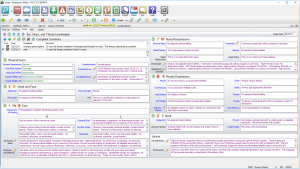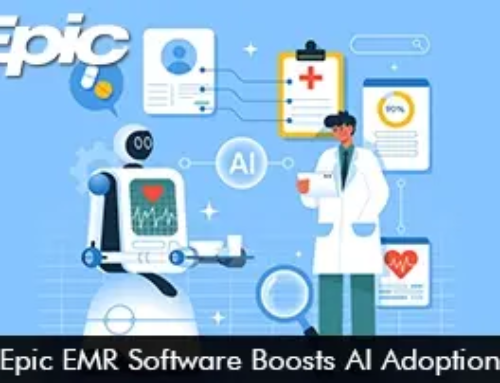EMR software is a vital tool for healthcare professionals, particularly nurses, especially how they manage patient information, interact with colleagues, and deliver care. Let’s explore in detail exactly how electronic medical records (EMR) software streamlines nursing workflows.
Digital Documentation
One of the most significant advantages of EMR software for nurses is the ability to create and manage digital patient records. Gone are the days of paper charts and handwritten notes, which were time-consuming and prone to errors. EMR software allows nurses to efficiently document patient data, including vital signs, medications, care plans, and progress notes, in a digital format. This streamlined documentation process reduces the risk of transcription errors and makes patient information readily accessible to the entire healthcare team.
Real-Time Charting
EMR systems enable real-time charting. This allows nurses to record patient information as it happens. Vital signs, medication administration, and assessments can be documented immediately, ensuring that the most up-to-date information is available to guide patient care decisions. Real-time charting promotes better communication among healthcare providers, as everyone has access to the same real-time data.
Interdisciplinary Communication Through EMR Software
EMR software facilitates seamless communication between nurses, physicians, pharmacists, and other members of the healthcare team. Nurses are able to send messages, share patient data, and receive alerts and notifications within the EMR system. This ensures that critical information is relayed promptly and accurately.
Medication Management
Administering medications is a fundamental nursing responsibility. EMR software offers electronic medication administration records (eMAR) and barcode scanning, which help nurses verify medication orders, reduce medication errors, and ensure that patients receive the right medications at the right time. It also provides alerts for potential drug interactions and allergies, enhancing patient safety.
EMR Software Aids Care Planning Through Task Lists
EMR software enables nurses to create and manage care plans electronically. These plans are customizable and can be designed to meet the specific needs of each patient. Task lists generated from care plans help nurses prioritize and track their daily responsibilities, ensuring that no critical tasks are overlooked. This feature is particularly valuable in busy healthcare settings where nurses juggle multiple patient cases.
Integration of Clinical Guidelines
Many EMR software solutions include clinical decision support tools that provide nurses with evidence-based guidelines and recommendations for patient care. These tools assist nurses in making informed decisions and adhering to best practices. This ultimately improves patient outcomes. For example, if a nurse is caring for a diabetic patient, the EMR system may offer guidance on insulin dosage adjustments based on the patient’s blood glucose levels.
Mobile Accessibility Through EMR Software Apps
The mobility of EMR software is a game-changer for nurses. With the availability of mobile apps and tablet compatibility, nurses can access patient records and input data from anywhere within the healthcare facility. This mobility enhances flexibility and allows nurses to spend more time at the bedside, interacting with patients and providing direct care.
Improved Patient Engagement
EMR software also plays a role in improving patient engagement. Nurses use the software to educate patients about their conditions, treatment plans, and medications. Patients have access to their own records through patient portals, empowering them to take a more active role in their healthcare. This increased engagement leads to better patient adherence to treatment plans and improved health outcomes.
Data Analytics and Reporting
EMR systems are rich sources of healthcare data. They store vast amounts of patient information, which are then analyzed to identify trends, assess outcomes, and improve healthcare practices. Nurses use data analytics tools within the EMR software to generate reports on patient outcomes, quality metrics, and resource utilization. This data-driven approach eventually leads to evidence-based improvements in nursing workflows and patient care protocols.
Billing and Coding Integration in EMR Software
Nursing workflows are not limited to direct patient care; they also include administrative tasks such as billing and coding. EMR software often integrates billing and coding functionalities, making it easier for nurses to document billable services and ensure accurate reimbursement. This integration streamlines the financial aspect of healthcare delivery and reduces administrative burdens on nurses.
Enhanced Security and Privacy
Protecting patient data is paramount in healthcare, and EMR software includes robust security features. Access controls, encryption, and audit trails ensure that patient data remains confidential and is only accessible to authorized personnel. Compliance with regulations like HIPAA (Health Insurance Portability and Accountability Act) is a top priority for EMR vendors.
EMR Software Assists in Scalability and Customization
Every healthcare facility is unique, and EMR software offers scalability and customization options to meet diverse needs. Nurses then adapt the software to their specific workflows. Whether they work in a small clinic, a large hospital, or a specialized care facility, they can modify the software to their needs. This flexibility ensures that EMR systems are adaptable to different nursing practice settings.









